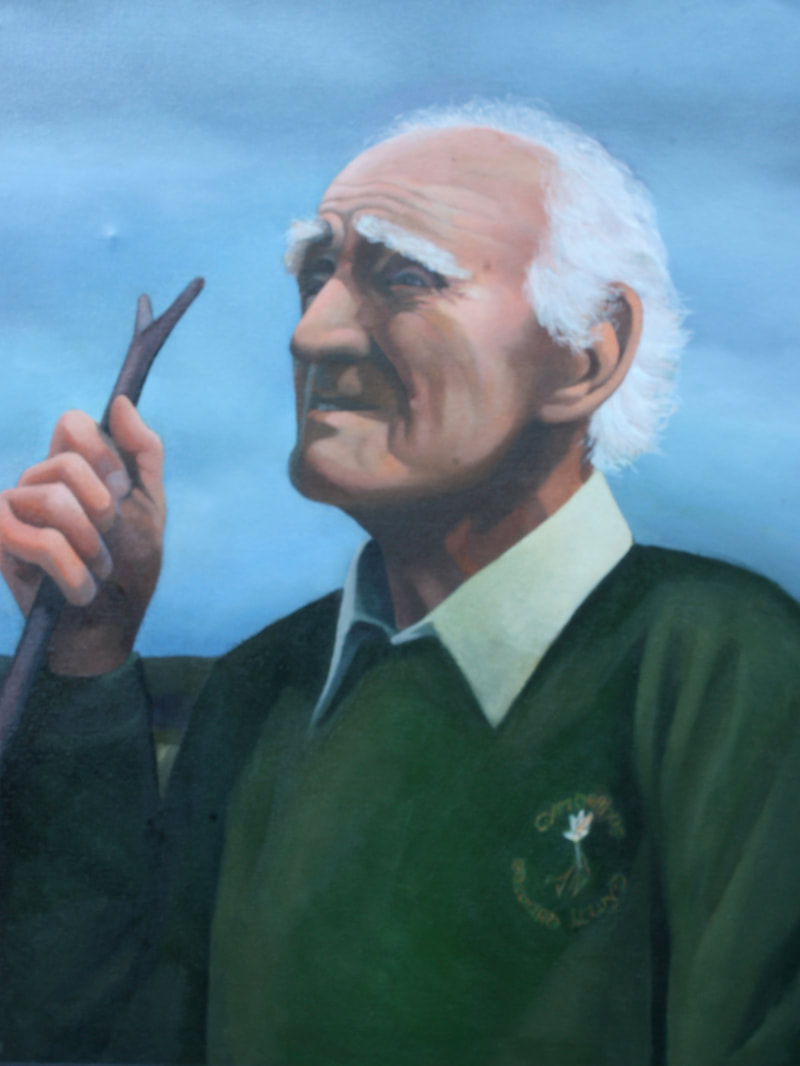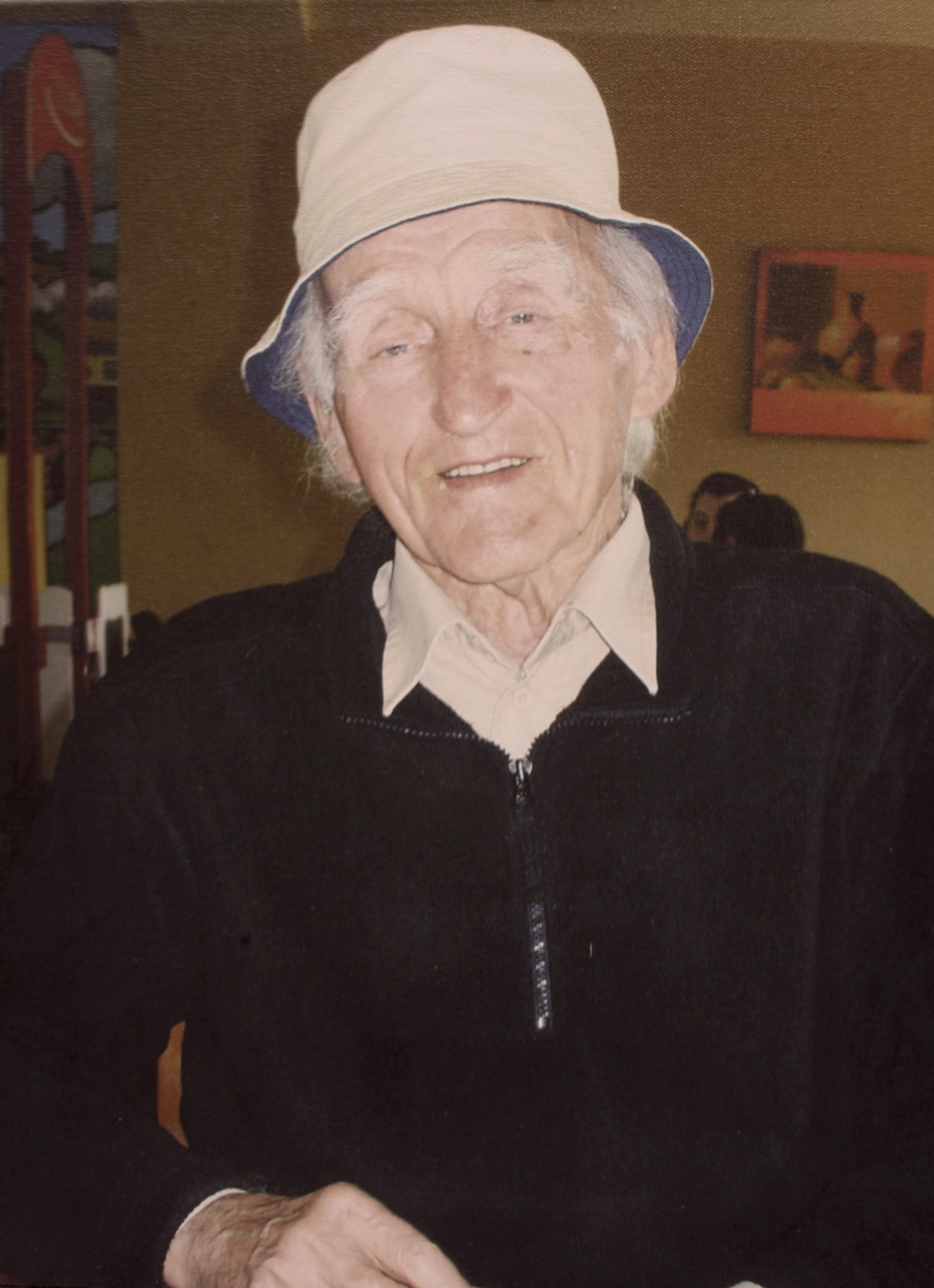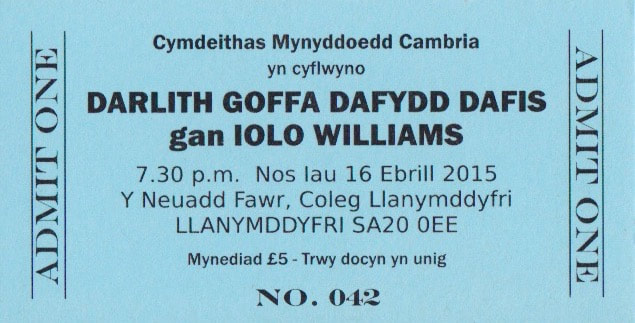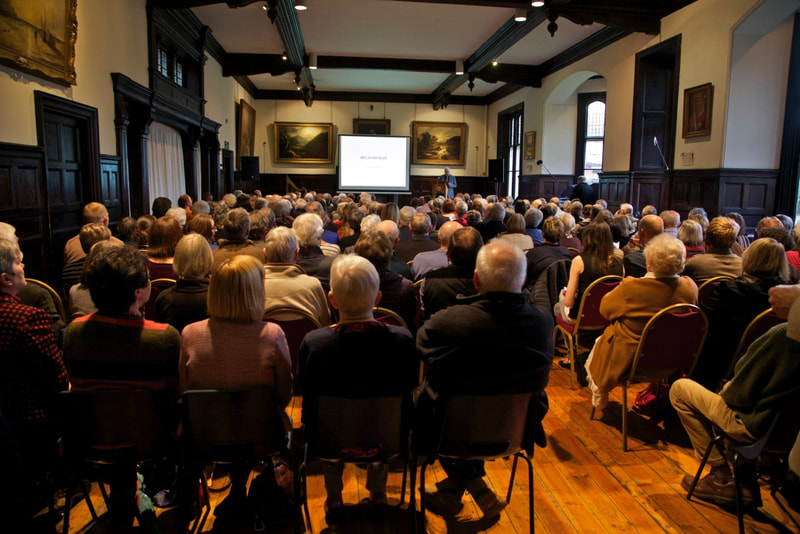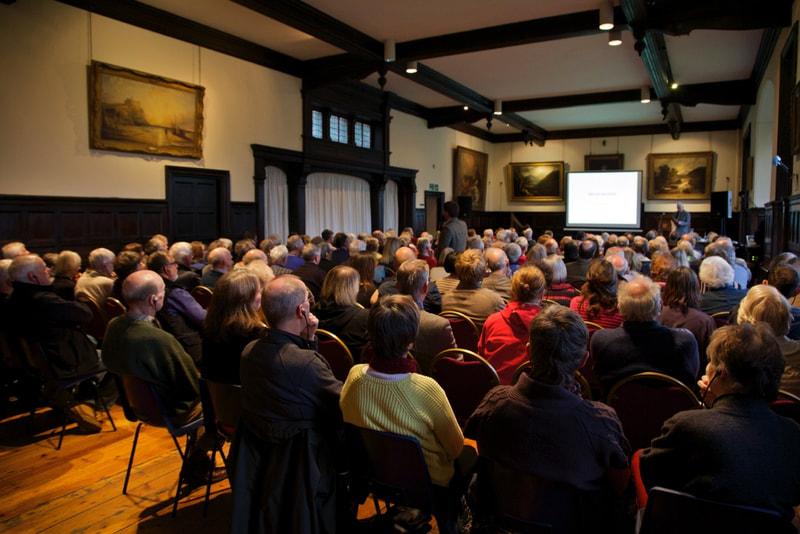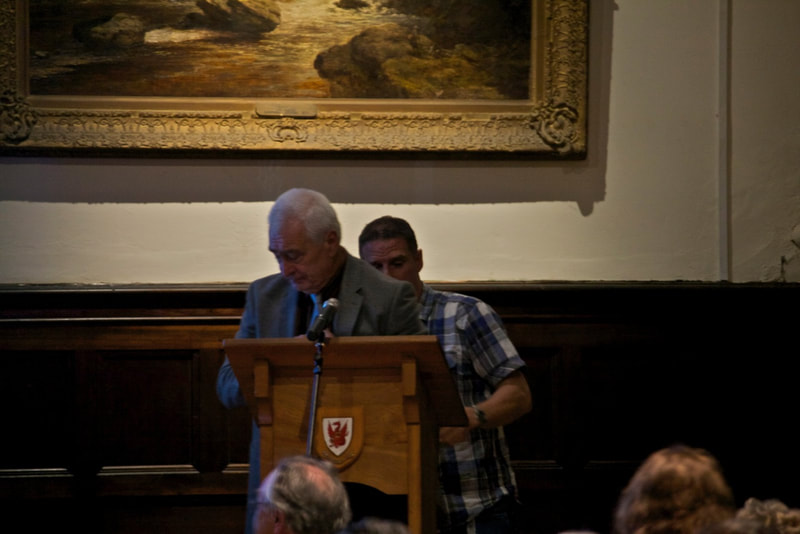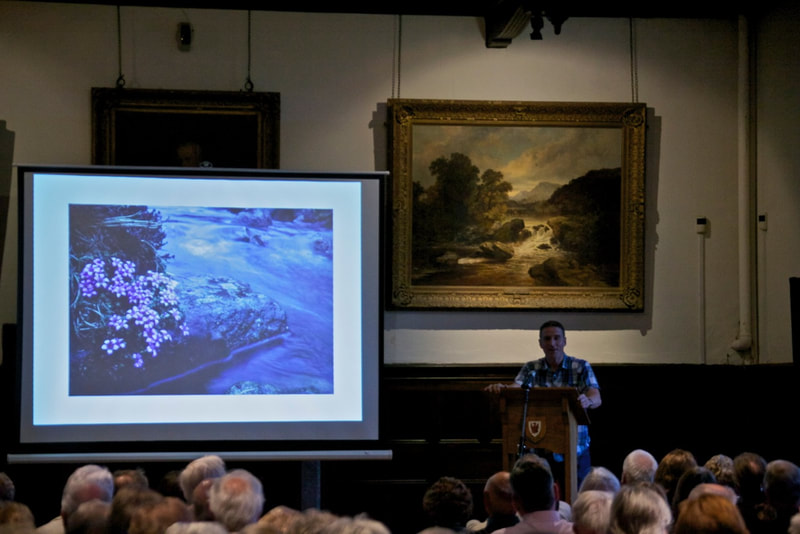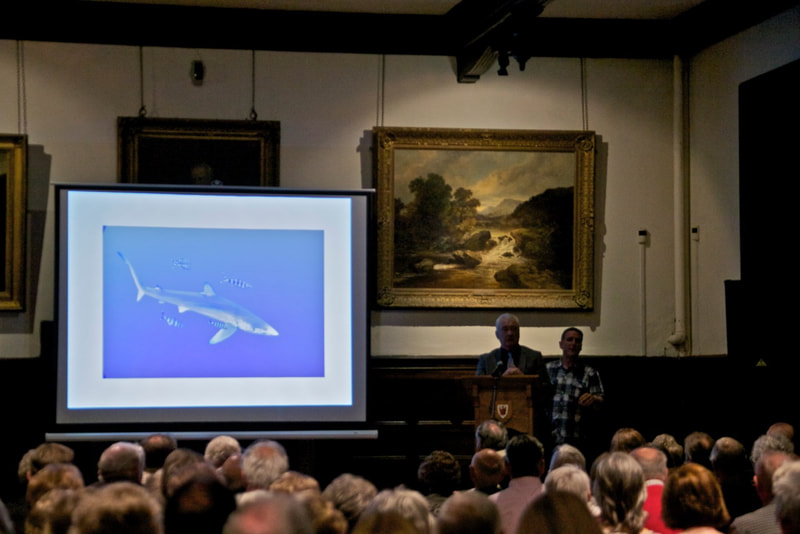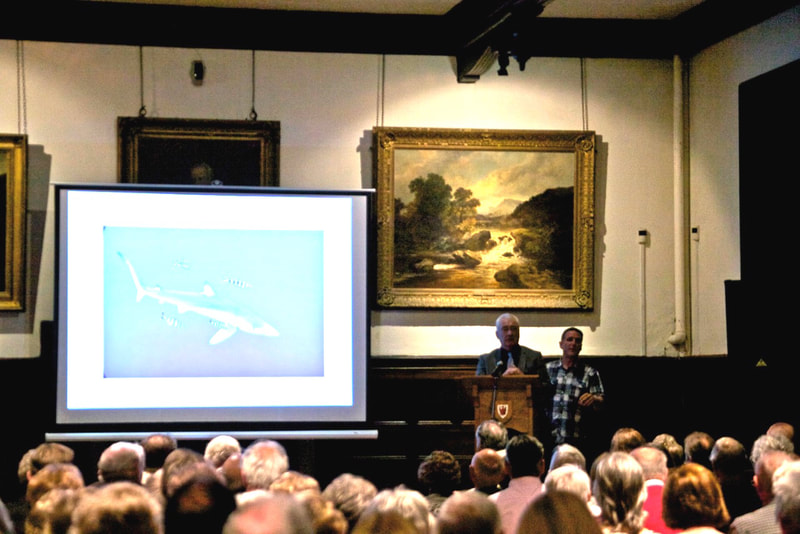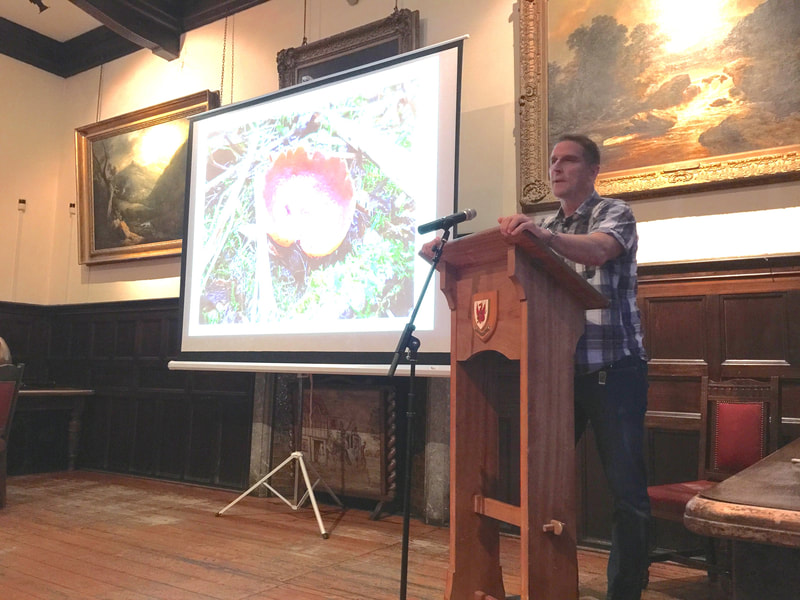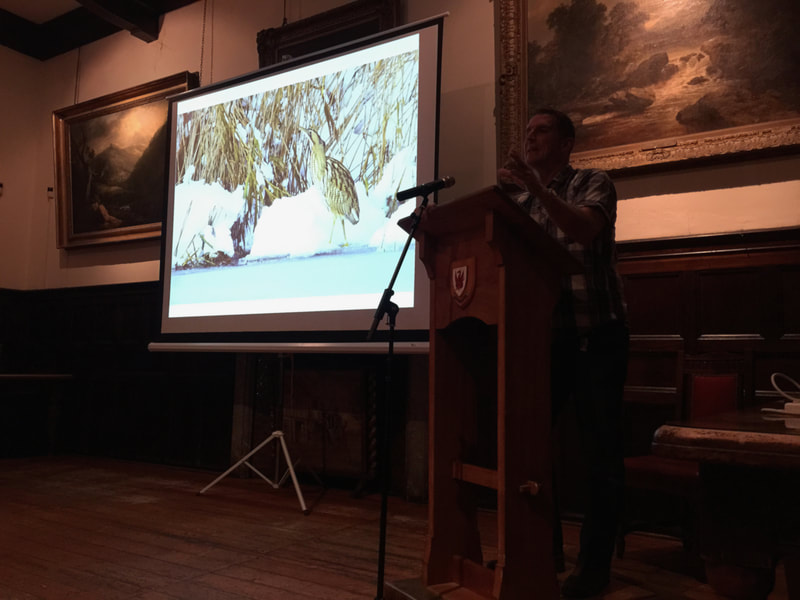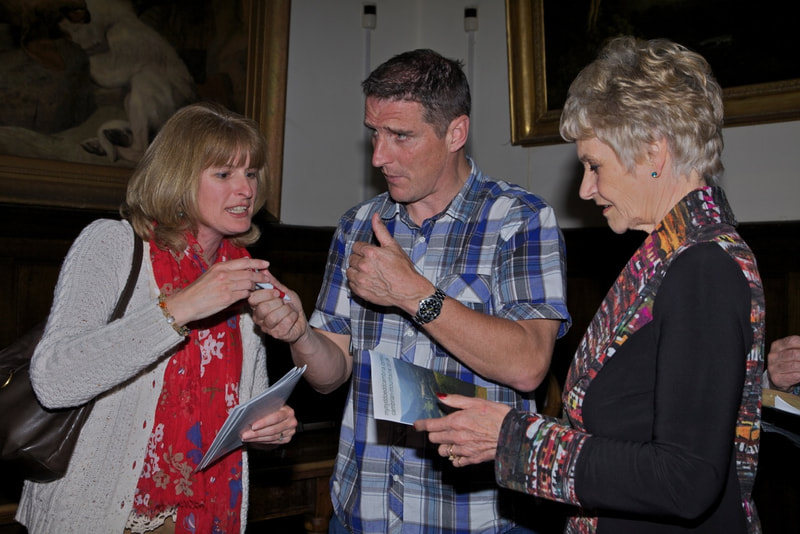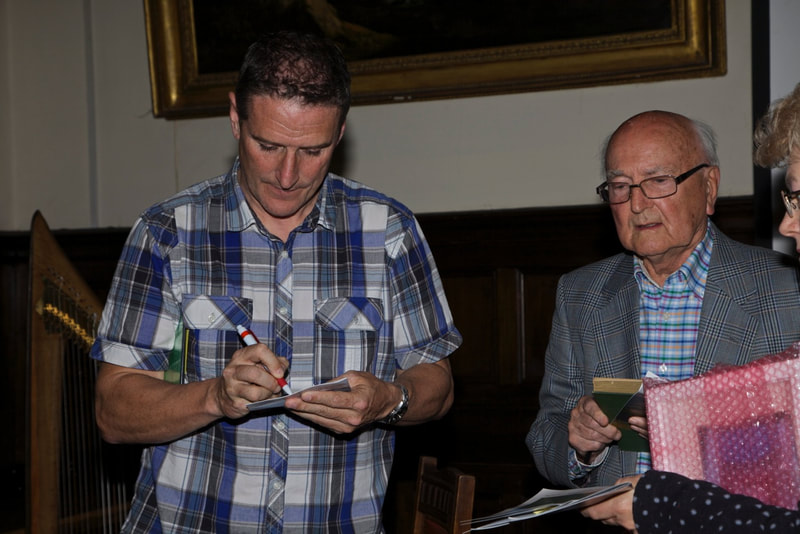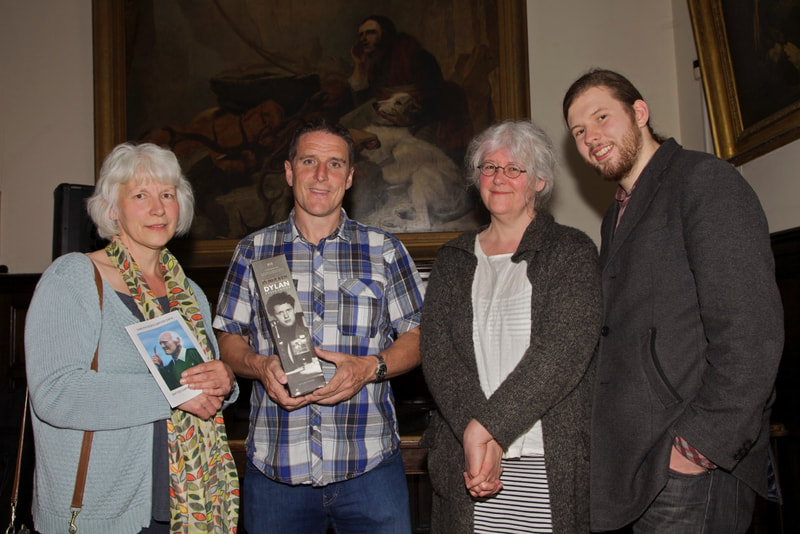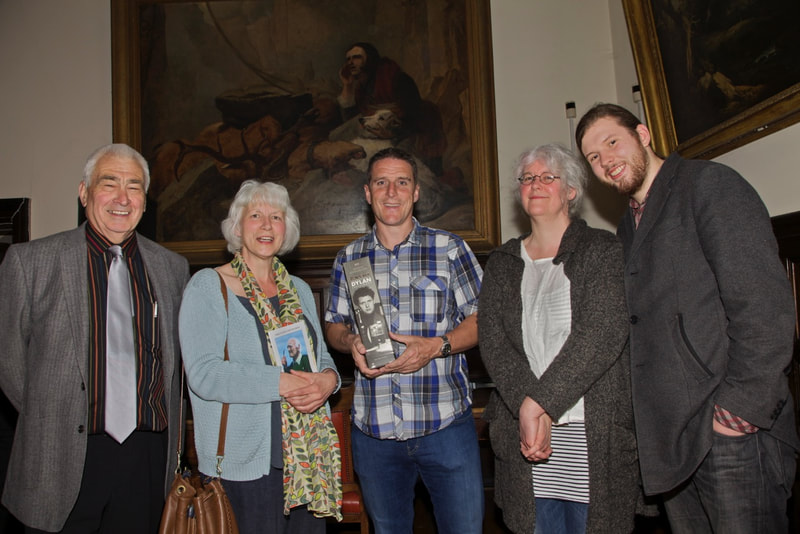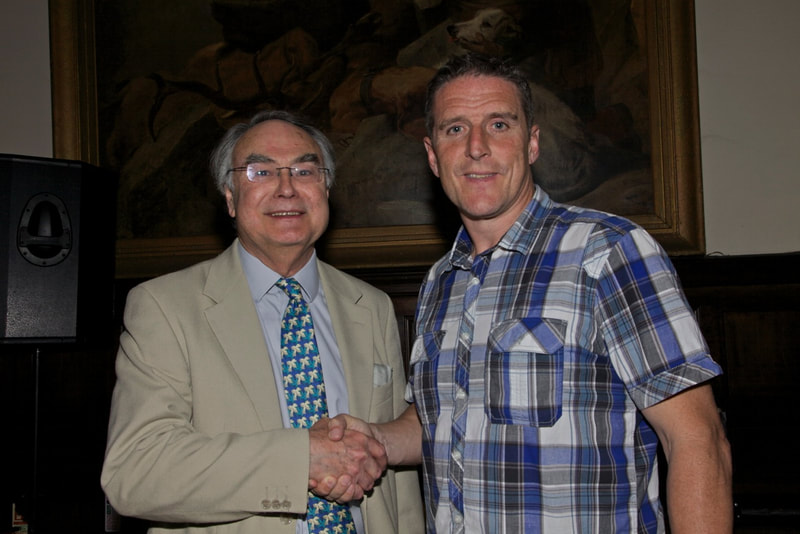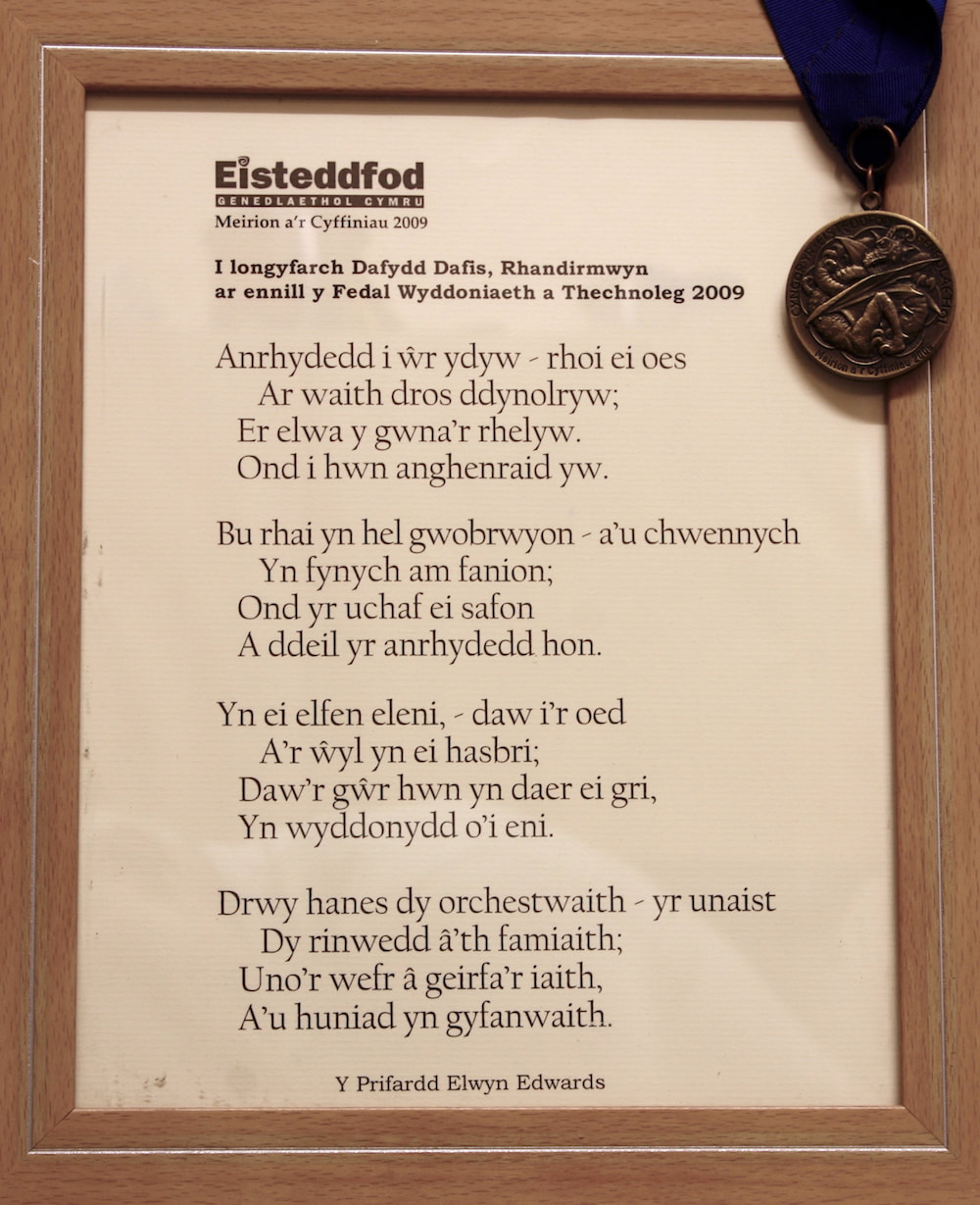Dafydd Dafis
DAFYDD DAFIS, RHANDIR-MWYN (1924-2012)
BY RHIANNON.
My father was born in the small mining community of Cwmgiedd in 1924. The son of a mining family, he described himself as a mischievous boy who was always getting into trouble, but much of that trouble came from the many hours he spent exploring the river Giedd and the surrounding hills. Though he didn’t realise it at the time, those boyhood experiences nurtured his lifelong love of the environment, and the mischievous boy grew into a man who was passionate about nature in all its forms.
Like most young men of his time, my father was drawn into training for the services. He wanted to be a pilot but couldn’t land a plane without bouncing it; so instead he trained as a navigator. Part of his basic training was done in Canada, and he used to bemoan the fact that he hadn’t visited any of the great National Parks while he was out there, instead of using up his leave time going to see Frank Sinatra!
Luckily the war ended before my father saw active service, and he left the RAF and returned to Wales where he trained as a teacher. A brief time in a Birmingham school did nothing to endear him to an urban landscape, and he came back to Wales as soon as it was feasible. By now he was married to Joan who gave him a lifetime of love and support, and in due course they had three daughters, Rhiannon, Siân and Catrin.
In 1958 the move to Rhandir-mwyn as headmaster of the village school gave my father the opportunity to develop his love of the countryside. It was a very Welsh community in those days, close knit and supportive, and word soon got round that Dafis y Sgŵl’ would welcome any oddity, animate or inanimate. Over time the school became a natural history museum in its own right, containing everything from a Stone Age millstone to owl pellets which had been carefully prised apart.
Like most young men of his time, my father was drawn into training for the services. He wanted to be a pilot but couldn’t land a plane without bouncing it; so instead he trained as a navigator. Part of his basic training was done in Canada, and he used to bemoan the fact that he hadn’t visited any of the great National Parks while he was out there, instead of using up his leave time going to see Frank Sinatra!
Luckily the war ended before my father saw active service, and he left the RAF and returned to Wales where he trained as a teacher. A brief time in a Birmingham school did nothing to endear him to an urban landscape, and he came back to Wales as soon as it was feasible. By now he was married to Joan who gave him a lifetime of love and support, and in due course they had three daughters, Rhiannon, Siân and Catrin.
In 1958 the move to Rhandir-mwyn as headmaster of the village school gave my father the opportunity to develop his love of the countryside. It was a very Welsh community in those days, close knit and supportive, and word soon got round that Dafis y Sgŵl’ would welcome any oddity, animate or inanimate. Over time the school became a natural history museum in its own right, containing everything from a Stone Age millstone to owl pellets which had been carefully prised apart.
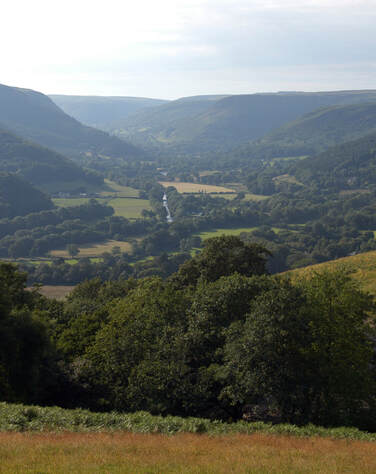
My father loved the Tywi Valley and fought hard to protect it. He was secretary of the defence committee that did battle to try and stop the building of the Brianne dam. Unfortunately they lost the fight, but years later when pylons threatened the beauty of the valley, my father lent his weight to the challenge, and this time there was success; the wires were buried underground and the valley retained its splendour.
As a conservationist my father was years ahead of his time. He was a member of the Kite Committee’ that oversaw the conservation strategy for this beautiful bird; he spent twenty four years recording the moths of the Upper Tywi Valley and he wrote the definitive book of Welsh plant names. His commitment and passion for the natural world earned him many plaudits which are too numerous to mention but which include being made a Fellow of the Linnaean Society and receiving an honorary M.Sc from the University of Wales. Perhaps his greatest achievement was to set up Cymdeithas Edward Llwyd, an organisation dedicated to Welsh naturalists that conducts itself wholly through the medium of Welsh.
His proudest honour, however, was being made a member of the Gorsedd as a recognition by fellow Welsh men and women of his valuable contribution to Welsh life.
My father was a kind and gentle man who always enjoyed the company of children and who himself never lost a child-like wonder at the beauty of our living world. His challenge and legacy is that all of us should take responsibility for our beautiful and precious countryside. - Rhiannon
As a conservationist my father was years ahead of his time. He was a member of the Kite Committee’ that oversaw the conservation strategy for this beautiful bird; he spent twenty four years recording the moths of the Upper Tywi Valley and he wrote the definitive book of Welsh plant names. His commitment and passion for the natural world earned him many plaudits which are too numerous to mention but which include being made a Fellow of the Linnaean Society and receiving an honorary M.Sc from the University of Wales. Perhaps his greatest achievement was to set up Cymdeithas Edward Llwyd, an organisation dedicated to Welsh naturalists that conducts itself wholly through the medium of Welsh.
His proudest honour, however, was being made a member of the Gorsedd as a recognition by fellow Welsh men and women of his valuable contribution to Welsh life.
My father was a kind and gentle man who always enjoyed the company of children and who himself never lost a child-like wonder at the beauty of our living world. His challenge and legacy is that all of us should take responsibility for our beautiful and precious countryside. - Rhiannon
DAFYDD DAFIS AUTOBIOGRAPHY
I was born on 29th September 1924 and spent my childhood up to the age of 12 years in the mining village of Cwmgiedd, near Ystradgynlais in the upper reaches of the Swansea valley. We were to move house then to Caerbont, a village lying between Ystradgynlais and Abercraf. My primary school education was spent in Cynlais School before moving on to Maesydderwen Grammar School, Ystradgynlais.
During my time in the sixth form I volunteered for aircrew duties in the RAF and was placed on deferred service until February 1943 when I entered the service under what was known as the PNB Scheme (Pilot/Navigator/Bomb Aimer Scheme).
I was sent to the Initial Training Wing of St. Andrews, Scotland. There then followed 12 hours flying training in a Tiger Moth at the end of which I was deemed unsuitable for a pilot's course!
This was followed by a wireless operator/air course at Cranwell, Lincolnshire, and on September 1944 I was sent to Heaton Park, Manchester to be kitted out ready for posting to Canada. Although my stay at Manchester was a brief one I managed to get a place in the rugby team which was captained by Willie Davies, the very fine outside half who played for Wales with Hayden Tanner as scrum half. Willie was a PE sergeant at Heaton Park at the time.
There followed a north Atlantic dash to Halifax, Nova Scotia, followed by a journey to No.10 Air Observer School, Chatham, New Brunswick. On return to Britain I followed a radar course at Shrewsbury Technical College. After completing the course there followed my last posting, this time to Boscombe Down Experimental Air Research Station. Following service here I was demobbed on February 1947 and returned home just in time for the very heavy snowfall of that year.
In September 1947 I entered Trinity College, Carmarthen, to be trained as a teacher. Almost all the intake that year consisted of ex-servicemen; no women were admitted at that time. At the end of the course, which was two years only then, I went to teach at Holloway Head Secondary Modern School, Birmingham. During my stay at the school Joan and I got married in April 1950; Joan lived then at Ynysmeudwy, near Pontardawe in the Swansea valley. After two years in Birmingham I applied to join a supplementary Rural Studies Course at Trinity College. Much of the course was taken up in field studies which I greatly enjoyed.
The end of the course, which lasted a year, found me acting as a supply teacher in Carmarthenshire, a duty which took me to Llangynog, Gelli Aur and Llanarne schools. Seeking stability, I applied for the post of Rural Science master at Llandrindod County Secondary School. Acceptance saw me enjoy three happy years teaching at this level and coaching a successful school rugby team consisting mainly of fit, enthusiastic and athletic 6th. formers.
After 3 years at Llandrindod I applied for the post of headmaster of Rhandirmwyn School. We arrived here a few days before Christmas 1957. By now we had two children, Rhiannon who was three years old and Sian who was three months old. The first sight of the beautiful upper Tywi valley made a great impression on us. Our third daughter, Catrin, was born here completing our family. The next 25 years or so were to be a rural idyll. We lived in the school-house and came to enjoy life in a community that was almost entirely Welsh-speaking. The children I taught were the sons and daughters of farmers and foresters mainly.
This was a period in which I came to play an active part in the conservation of our natural heritage. I served for a considerable number of years on the then Nature Conservancy Council Committee for Wales under the chairmanship of Dr. Douglas Bassett, then Director of the National Museum of Wales.
I Served also on the Committee for Wales of The Forestry Commission, chaired by Mr. Gibson-Watt. With the approval of the NCC and the FC I set up a nature reserve for the school at Allt yr Hwch, a high altitude oak wood on Forestry Commission Land. The County Education Authority approved a fine cedarwood hut where we could store equipment, carry out work and obtain shelter should the weather turn out to be inclement. The reserve was later extended for use by all schools in the county. I spent a three year period as chairman of the West Wales Naturalists Trust as it was then called. My membership of the Botanical Society of the British Isles (BSBI) resulted in my becoming the minuting secretary of the Committee for Wales.
Living as I am in the last refuge of the kite when it had been shot, poisoned and trapped out of existence in the rest of Britain, I was bound to take a great deal of interest in the conservation of the kite. Although I was never a member of the old Kite Committee, I came to know most of its members:
Captain H.R.H Vaughan who chaired the committee throughout the sixties lived here in the village of Rhandirmwyn with his wife Irene who was a fine field botanist and keen watcher of the Kite, indeed both were awarded the RSPB's Gold Medal in 1968;
Tommie Warren Davies, a much loved Pembrokeshire figure, was another distinguished botanist and fine all-round naturalist;
Bill Condry and his wife Penny travelled from Eglwysfach to Rhandirmwyn to keep an eye on nesting kites, staying at the old farmhouse of Troedrhiwcymer and Penny kept the minutes of the committee's meetings;
Dr. C.M. Fenn, a GP at Llanwrtyd kept watch on the kites of his area;
Peter Panting, Warden of Tregaron Bog, looked after his patch in Tregaron and was in addition a mammalogist and amateur painter of wildlife;
R.S. Thomas, the bard, was an enthusiastic ornithologist who enjoyed Bill's company when he became vicar of Eglwysfach church;
Col. Morrey Salmon kept careful records of the locations of Kite nests, knowing more about the history of the kite in Wales than most people.
This group brought order to the monitoring of the kite in Wales and saw a slow but steady increase in numbers.
In 1968 I was admitted a Fellow of the Linnean Society of London. The end of the following year saw the closure of Rhandirmwyn School despite the efforts of the County Council to keep it open; the numbers in the end had fallen to just three children. A period of teaching at Llandovery County Secondary School followed before I took up headship duties at Capel Cynfab Primary School in neighbouring Cynghordy village, where I spent the next 14 years before my retirement.
In May 1986 a kite's nest in my care was robbed of its two eggs. This resulted in a court case in which I was a witness. The egg thief and his accomplice were found guilty and heavily fined and an egg collector involved in the case was also fined and his egg collection confiscated.
On the 8 August 1991 I was admitted as Ovate to the Gorsedd of Bards during the National Eisteddfod of Wales held at Mold, an honour which I greatly esteem.
In July 1992 I was awarded the honorary degree of MSc. by the University of Wales in a ceremony held at Cardiff University.
This year Cymdeithas Edward Llwyd celebrates its silver jubilee and as its founder and president I, and 46 other members of the Society greatly enjoyed a three-day visit to Oxford where Edward Llwyd (1660-1709) was curator of the Ashmolean Museum.
During my time in the sixth form I volunteered for aircrew duties in the RAF and was placed on deferred service until February 1943 when I entered the service under what was known as the PNB Scheme (Pilot/Navigator/Bomb Aimer Scheme).
I was sent to the Initial Training Wing of St. Andrews, Scotland. There then followed 12 hours flying training in a Tiger Moth at the end of which I was deemed unsuitable for a pilot's course!
This was followed by a wireless operator/air course at Cranwell, Lincolnshire, and on September 1944 I was sent to Heaton Park, Manchester to be kitted out ready for posting to Canada. Although my stay at Manchester was a brief one I managed to get a place in the rugby team which was captained by Willie Davies, the very fine outside half who played for Wales with Hayden Tanner as scrum half. Willie was a PE sergeant at Heaton Park at the time.
There followed a north Atlantic dash to Halifax, Nova Scotia, followed by a journey to No.10 Air Observer School, Chatham, New Brunswick. On return to Britain I followed a radar course at Shrewsbury Technical College. After completing the course there followed my last posting, this time to Boscombe Down Experimental Air Research Station. Following service here I was demobbed on February 1947 and returned home just in time for the very heavy snowfall of that year.
In September 1947 I entered Trinity College, Carmarthen, to be trained as a teacher. Almost all the intake that year consisted of ex-servicemen; no women were admitted at that time. At the end of the course, which was two years only then, I went to teach at Holloway Head Secondary Modern School, Birmingham. During my stay at the school Joan and I got married in April 1950; Joan lived then at Ynysmeudwy, near Pontardawe in the Swansea valley. After two years in Birmingham I applied to join a supplementary Rural Studies Course at Trinity College. Much of the course was taken up in field studies which I greatly enjoyed.
The end of the course, which lasted a year, found me acting as a supply teacher in Carmarthenshire, a duty which took me to Llangynog, Gelli Aur and Llanarne schools. Seeking stability, I applied for the post of Rural Science master at Llandrindod County Secondary School. Acceptance saw me enjoy three happy years teaching at this level and coaching a successful school rugby team consisting mainly of fit, enthusiastic and athletic 6th. formers.
After 3 years at Llandrindod I applied for the post of headmaster of Rhandirmwyn School. We arrived here a few days before Christmas 1957. By now we had two children, Rhiannon who was three years old and Sian who was three months old. The first sight of the beautiful upper Tywi valley made a great impression on us. Our third daughter, Catrin, was born here completing our family. The next 25 years or so were to be a rural idyll. We lived in the school-house and came to enjoy life in a community that was almost entirely Welsh-speaking. The children I taught were the sons and daughters of farmers and foresters mainly.
This was a period in which I came to play an active part in the conservation of our natural heritage. I served for a considerable number of years on the then Nature Conservancy Council Committee for Wales under the chairmanship of Dr. Douglas Bassett, then Director of the National Museum of Wales.
I Served also on the Committee for Wales of The Forestry Commission, chaired by Mr. Gibson-Watt. With the approval of the NCC and the FC I set up a nature reserve for the school at Allt yr Hwch, a high altitude oak wood on Forestry Commission Land. The County Education Authority approved a fine cedarwood hut where we could store equipment, carry out work and obtain shelter should the weather turn out to be inclement. The reserve was later extended for use by all schools in the county. I spent a three year period as chairman of the West Wales Naturalists Trust as it was then called. My membership of the Botanical Society of the British Isles (BSBI) resulted in my becoming the minuting secretary of the Committee for Wales.
Living as I am in the last refuge of the kite when it had been shot, poisoned and trapped out of existence in the rest of Britain, I was bound to take a great deal of interest in the conservation of the kite. Although I was never a member of the old Kite Committee, I came to know most of its members:
Captain H.R.H Vaughan who chaired the committee throughout the sixties lived here in the village of Rhandirmwyn with his wife Irene who was a fine field botanist and keen watcher of the Kite, indeed both were awarded the RSPB's Gold Medal in 1968;
Tommie Warren Davies, a much loved Pembrokeshire figure, was another distinguished botanist and fine all-round naturalist;
Bill Condry and his wife Penny travelled from Eglwysfach to Rhandirmwyn to keep an eye on nesting kites, staying at the old farmhouse of Troedrhiwcymer and Penny kept the minutes of the committee's meetings;
Dr. C.M. Fenn, a GP at Llanwrtyd kept watch on the kites of his area;
Peter Panting, Warden of Tregaron Bog, looked after his patch in Tregaron and was in addition a mammalogist and amateur painter of wildlife;
R.S. Thomas, the bard, was an enthusiastic ornithologist who enjoyed Bill's company when he became vicar of Eglwysfach church;
Col. Morrey Salmon kept careful records of the locations of Kite nests, knowing more about the history of the kite in Wales than most people.
This group brought order to the monitoring of the kite in Wales and saw a slow but steady increase in numbers.
In 1968 I was admitted a Fellow of the Linnean Society of London. The end of the following year saw the closure of Rhandirmwyn School despite the efforts of the County Council to keep it open; the numbers in the end had fallen to just three children. A period of teaching at Llandovery County Secondary School followed before I took up headship duties at Capel Cynfab Primary School in neighbouring Cynghordy village, where I spent the next 14 years before my retirement.
In May 1986 a kite's nest in my care was robbed of its two eggs. This resulted in a court case in which I was a witness. The egg thief and his accomplice were found guilty and heavily fined and an egg collector involved in the case was also fined and his egg collection confiscated.
On the 8 August 1991 I was admitted as Ovate to the Gorsedd of Bards during the National Eisteddfod of Wales held at Mold, an honour which I greatly esteem.
In July 1992 I was awarded the honorary degree of MSc. by the University of Wales in a ceremony held at Cardiff University.
This year Cymdeithas Edward Llwyd celebrates its silver jubilee and as its founder and president I, and 46 other members of the Society greatly enjoyed a three-day visit to Oxford where Edward Llwyd (1660-1709) was curator of the Ashmolean Museum.
CAMBRIAN MOUNTAINS SOCIETY
Dafydd Dafis MEMORIAL LECTURE
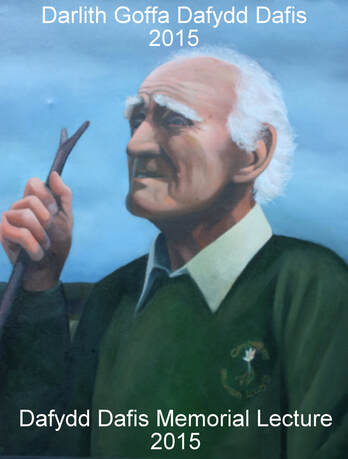
The Cambrian Mountains Society is really delighted to be supporting a lecture given by our President Iolo Williams to honour the memory of Dafydd Dafis. The Cambrian Mountains Society is passionate about the landscape and beauty of the Cambrian Mountains and builds on the work of those like Dafydd Dafis Rhandir-mwyn who loved the area, campaigned to protect its landscape, and to preserve its wildlife and natural habitat. Dafydd Dafis has deservedly received many Welsh honours. He is commemorated in poetry and in awards – but most of all in the hearts and minds of local people, many of whom he taught and remember him with affection and pride. The trustees of the Cambrian Mountains Society honour all the work he did, the discoveries he made and the campaigns he ran.
We hope that the Society will be able to have an annual lecture in his memory but above all that you will enjoy this evening and feel the excitement about the area that Dafydd Dafis clearly portrayed to many and that the Cambrian Mountains Society exists to protect and promote.
Prof. Roger Earis. Chairman The Cambrian Mountains Society.
We hope that the Society will be able to have an annual lecture in his memory but above all that you will enjoy this evening and feel the excitement about the area that Dafydd Dafis clearly portrayed to many and that the Cambrian Mountains Society exists to protect and promote.
Prof. Roger Earis. Chairman The Cambrian Mountains Society.

